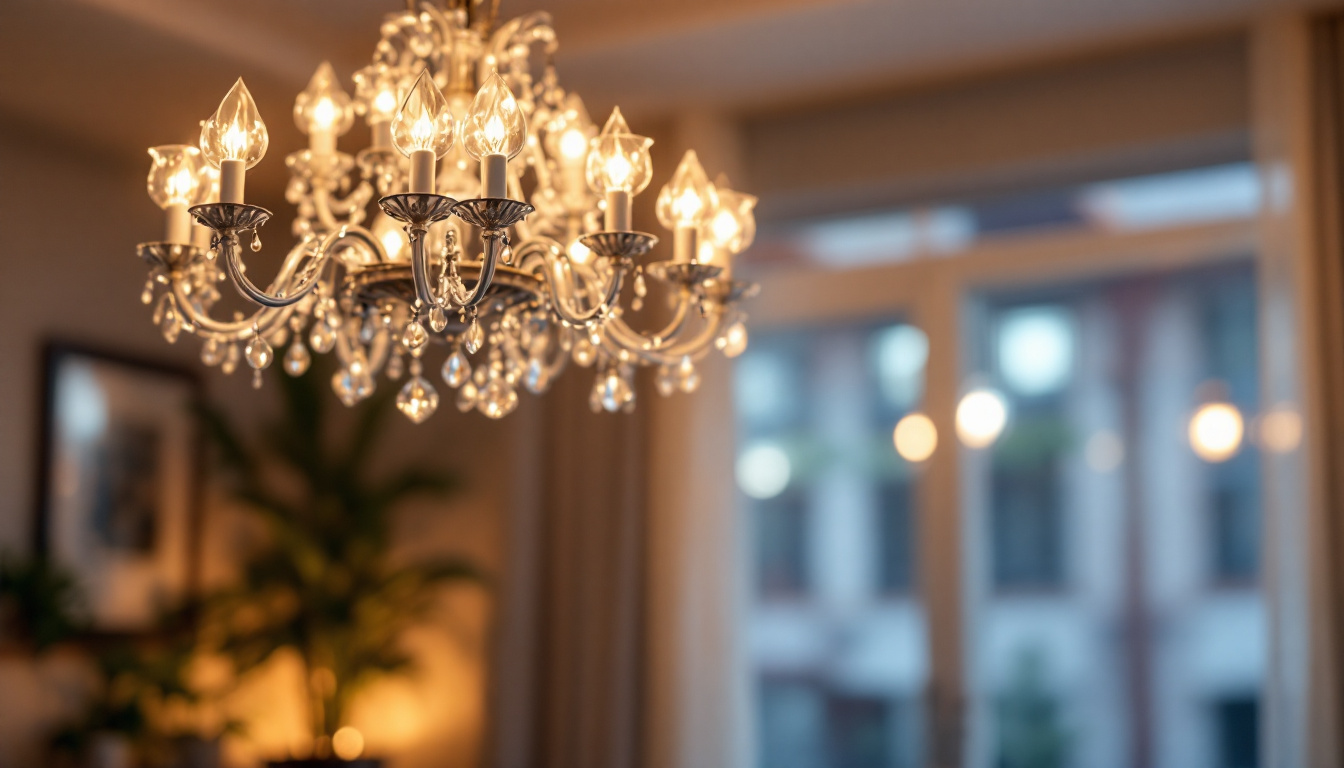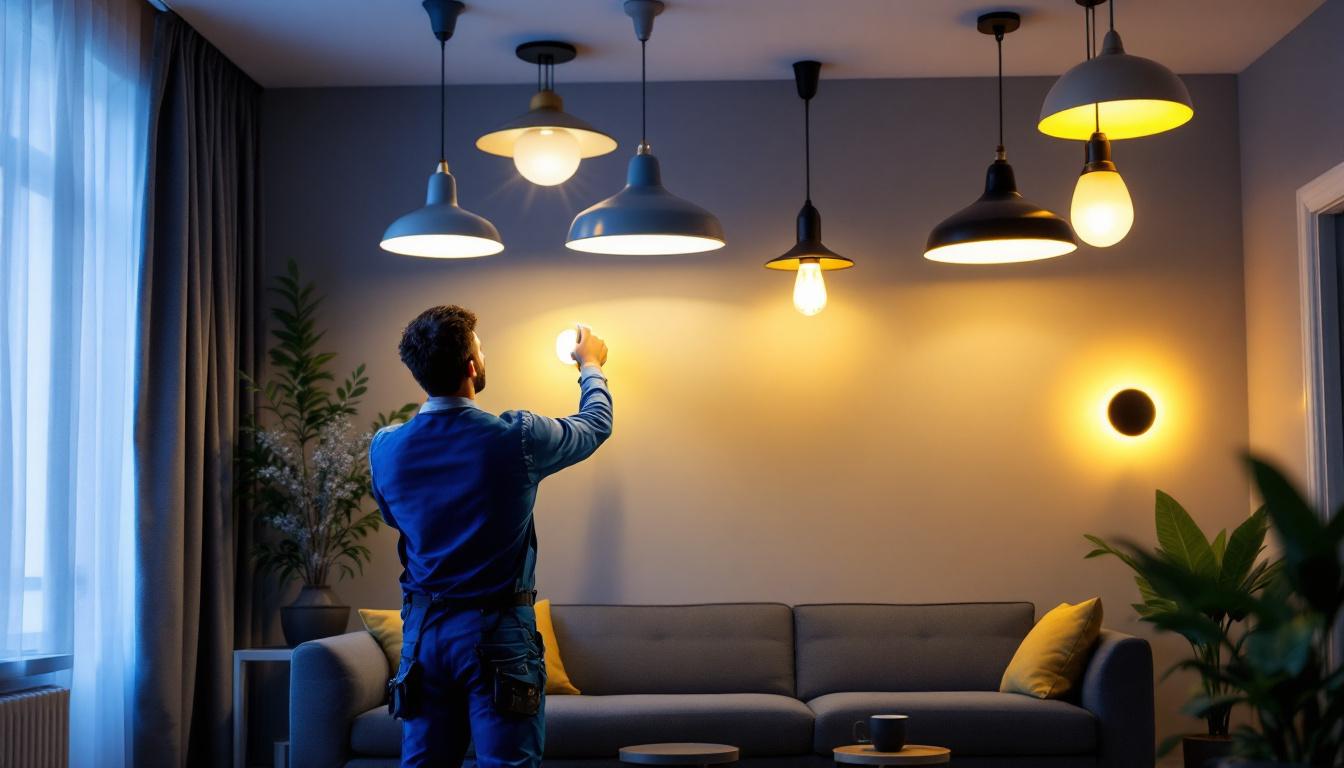
In the realm of interior design, chandeliers represent a perfect blend of functionality and artistry. These exquisite fixtures not only illuminate spaces but also serve as focal points that enhance the overall aesthetic of a room. For lighting contractors, understanding how to optimize chandeliers for maximum efficiency is crucial. This article delves into various strategies and considerations that can elevate chandelier lighting to new heights.
With growing awareness of environmental sustainability, energy efficiency has become a priority in lighting design. Chandeliers, often seen as luxury items, can also contribute significantly to energy savings when optimized correctly. By selecting the right components and technologies, contractors can ensure that their installations not only look stunning but also minimize energy consumption. The aesthetic appeal of a chandelier can be enhanced by incorporating energy-efficient designs, which can serve as a focal point in any room while also promoting a greener lifestyle.
Moreover, the integration of smart lighting systems with chandeliers allows for even greater control over energy usage. Homeowners can adjust brightness levels, set schedules, and even control their lighting remotely through smartphone applications. This level of customization not only enhances the ambiance of a space but also encourages users to be more mindful of their energy consumption, further promoting sustainability in their everyday lives.
Chandeliers can vary widely in their energy usage, depending on the type of bulbs used and the overall design. Traditional incandescent bulbs consume more power and have a shorter lifespan compared to modern alternatives. For example, LED bulbs are known for their longevity and lower wattage, making them an ideal choice for chandeliers. Understanding these differences is essential for contractors aiming to provide energy-efficient solutions. Additionally, the design of the chandelier itself can influence energy consumption; larger fixtures may require more bulbs, but selecting energy-efficient options can mitigate this impact.
Furthermore, the placement of chandeliers can also affect energy efficiency. Strategically positioning a chandelier to maximize natural light during the day can reduce the need for artificial lighting, allowing homeowners to enjoy a well-lit space without relying solely on electrical sources. This thoughtful approach not only enhances the overall aesthetic but also aligns with sustainable practices by reducing energy demands throughout the day.
Many regions have implemented regulations that encourage or mandate energy-efficient lighting solutions. Familiarizing oneself with these regulations can not only ensure compliance but also open doors to potential incentives. Rebates or tax credits for using energy-efficient lighting can significantly offset initial costs, making it more appealing for clients to invest in optimized chandelier installations. Additionally, staying updated on local and national energy standards can help contractors position themselves as knowledgeable professionals in the field, enhancing their credibility and attracting eco-conscious clients.
In many cases, utility companies also offer programs aimed at promoting energy efficiency, which can provide further financial benefits for both contractors and homeowners. By participating in these programs, contractors can not only help their clients save money but also contribute to a larger movement towards sustainable energy practices. This collaborative effort can foster a sense of community responsibility, encouraging more individuals to consider the environmental impact of their lighting choices and inspiring them to make informed decisions that benefit both their homes and the planet.
The choice of bulbs is a critical factor in optimizing chandeliers. The right bulbs can enhance the ambiance of a space while ensuring energy efficiency. Contractors must consider several aspects when selecting bulbs for chandeliers.
LED bulbs have emerged as the preferred choice for chandelier lighting due to their energy efficiency and versatility. Unlike traditional incandescent bulbs, LED options consume significantly less power and have a lifespan that can exceed 25,000 hours. This longevity translates to reduced maintenance costs and fewer replacements over time. Furthermore, LED bulbs are available in various designs and styles, allowing homeowners to maintain the aesthetic appeal of their chandeliers without compromising on performance. Many LED bulbs also come with dimming capabilities, enabling users to adjust the brightness to suit different occasions, from intimate dinners to festive gatherings.
Another important consideration is the color temperature and lumens of the bulbs. Color temperature affects the mood of a room; warmer tones create a cozy atmosphere, while cooler tones can make a space feel more vibrant. It’s crucial to match the color temperature with the intended use of the room. Additionally, understanding lumens—the measure of light output—ensures that the chandelier provides adequate illumination without being overpowering. For instance, a dining room might benefit from a warm white light around 2700K to foster a welcoming environment, while a home office may require a cooler light around 4000K to enhance focus and productivity. Moreover, the placement of the chandelier and the height at which it hangs can also influence how effectively the light disperses throughout the room, making it essential to consider these factors in conjunction with bulb selection.
While the technical aspects of bulbs are essential, the design of the chandelier itself plays a significant role in optimizing lighting efficiency. A well-designed chandelier can enhance light distribution and reduce energy waste.
The size of the chandelier should be proportional to the room it occupies. A chandelier that is too small may not provide sufficient light, while one that is too large can overwhelm the space. Properly sizing the chandelier ensures that it can effectively illuminate the area without requiring excessive wattage. Additionally, considering the height at which the chandelier is hung is crucial; it should be positioned to allow for unobstructed views and movement while maximizing the spread of light across the room.
Utilizing reflective materials in chandelier design can amplify light output. Chandeliers made with crystal or polished metals can enhance brightness by reflecting light throughout the room. This not only improves efficiency but also adds an element of luxury to the design. Furthermore, the choice of finish can significantly impact the overall aesthetic and functionality. For instance, a matte finish may absorb more light, whereas a glossy surface can create a shimmering effect, enhancing the ambiance of the space.
Choosing the right type of light bulbs is equally important in maximizing the efficiency of a chandelier. LED bulbs, for example, offer a longer lifespan and lower energy consumption compared to traditional incandescent bulbs. Additionally, they come in various color temperatures, allowing homeowners to select the perfect ambiance for their space. When selecting bulbs, it’s also essential to consider the chandelier’s design; some fixtures may require specific bulb shapes or sizes to ensure optimal light distribution and aesthetic appeal.
The placement of a chandelier can dramatically affect its efficiency and the overall feel of the room. Ideally, a chandelier should be hung at a height that allows for adequate clearance while also ensuring that the light casts evenly across the space. In dining areas, for example, a chandelier should typically hang about 30 to 36 inches above the table to provide adequate illumination without obstructing views. In larger rooms, multiple chandeliers or a combination of lighting fixtures can create layers of light, enhancing both functionality and design while minimizing energy use.
Incorporating smart technology into chandelier installations can significantly enhance efficiency and user experience. smart lighting solutions allow for greater control over how and when chandeliers are used.
Installing dimmer switches enables users to adjust the brightness of the chandelier according to their needs. This flexibility not only enhances the ambiance but also reduces energy consumption. By lowering the brightness during certain times of the day or for specific activities, users can achieve substantial energy savings.
Integrating chandeliers into a smart home system allows for remote control and automation. Homeowners can program their chandeliers to turn on or off at specific times or adjust brightness levels based on natural light availability. This level of control ensures that energy is used efficiently and only when needed.
To maintain the efficiency of chandeliers over time, regular maintenance is essential. Proper care not only prolongs the life of the fixture but also ensures that it continues to perform at optimal levels.
Dust and grime can accumulate on chandeliers, diminishing their brightness and overall appearance. Regular cleaning helps maintain the fixture’s reflective qualities and ensures that it provides maximum illumination. Contractors should advise clients on proper cleaning techniques and schedules to keep their chandeliers looking and functioning their best.
As technology advances, upgrading components of existing chandeliers can enhance their efficiency. For instance, replacing outdated bulbs with newer LED options or installing more efficient dimmer switches can significantly improve performance without the need for a complete fixture replacement.
Optimizing chandeliers for maximum efficiency involves a multifaceted approach that considers energy consumption, bulb selection, design, smart technology, and maintenance. By focusing on these areas, lighting contractors can provide clients with stunning fixtures that not only enhance the aesthetic appeal of their spaces but also contribute to energy savings and sustainability.
As the demand for energy-efficient lighting solutions continues to grow, staying informed about the latest technologies and trends is vital for contractors. By embracing innovative practices and educating clients about the benefits of optimized chandelier lighting, contractors can position themselves as leaders in the industry, delivering exceptional value and service.
Ultimately, the goal is to create beautiful, functional spaces that reflect the unique style of each client while promoting energy efficiency. With the right strategies in place, chandeliers can shine brightly, illuminating spaces with elegance and efficiency for years to come.
Ready to elevate your lighting projects with the efficiency and elegance of chandeliers? At LumenWholesale, we offer an exceptional range of high-quality, spec-grade lighting options that will bring your designs to life while ensuring maximum energy savings. Say goodbye to inflated markups and hello to unbeatable wholesale prices, all with the convenience of free shipping on bulk orders. Don’t compromise on quality or value; choose LumenWholesale for your lighting needs and make every space shine with sophistication. Wholesale Lighting at the Best Value is just a click away.

Discover how patio outdoor lights can be a game-changer for lighting contractors looking to win more bids.

Discover the advantages of using shunted tombstones in lighting projects.

Discover the essential guide to ceiling light fixtures with insights from top lighting contractors.

Discover essential tips and expert insights for lighting contractors on effectively utilizing 4-foot LED lights.